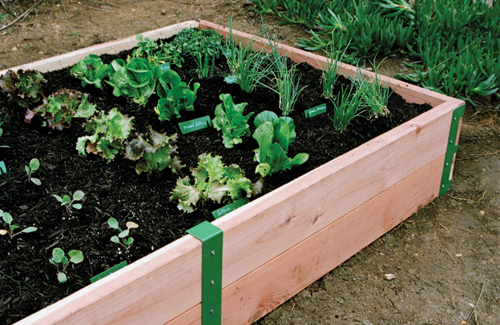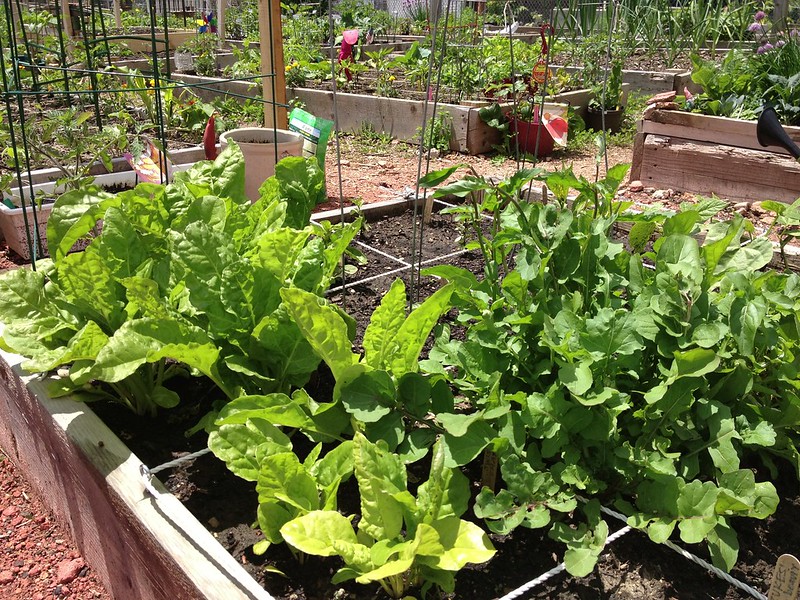Reveal the Keys to Developing a Attractive and Efficient Gardening Space
Producing a beautiful and effective gardening space is not merely an issue of planting flowers and vegetables; it requires a calculated technique that includes different critical elements. From picking the right area based on sunshine and soil type to thoughtfully developing your layout and selecting appropriate plants, each decision plays a pivotal role in the success of your garden.
Choosing the Right Area
Selecting the ideal area for your garden is essential to its success and total visual appeal. The initial step in this procedure includes assessing sunshine exposure, as the majority of plants call for at least 6 hours of direct sunshine daily (Homestead Gardening). A south-facing garden typically gets the most light, while shaded areas can hamper growth and flowering
Additionally, think about soil top quality and drainage. Well-draining dirt is vital to avoid water logged roots, which can cause plant diseases. Carrying out a dirt examination can supply valuable details regarding pH degrees and vitamins and mineral content, allowing you to modify the dirt as necessary.
Additionally, proximity to water resources is an additional element to evaluate - Homestead Gardening. Having easy access to a pipe or watering system can simplify the watering procedure and encourage consistent plant care. Wind defense is likewise crucial; placing your yard near structures, such as wall surfaces or fencings, can secure it from harsh winds that might harm fragile plants
Last but not least, think about ease of access for maintenance and harvesting. A well-placed garden enables convenient gain access to, making sure that you can quickly tend to your plants without causing undue tension or disruption. Thoughtful location option lays the foundation for a prospering garden.
Choosing Plants Carefully
When selecting plants for your yard, it's necessary to consider elements such as climate, soil conditions, and personal choices to make certain a productive and unified room. A thorough understanding of your regional climate will certainly lead you in choosing plants that grow in your details setting. Choosing drought-resistant varieties is beneficial in dry regions, while moisture-loving varieties might be a lot more ideal for areas with high rainfall.
Soil problems are equally essential; performing a soil test can reveal pH degrees and nutrition content, enabling you to select plants that will prosper. Native plants are usually a superb option, as they are generally well-adapted to neighborhood soil kinds and need much less maintenance.
Reflect on your personal preferences-- choosing plants that resonate with your visual tastes will boost your pleasure and commitment to maintaining your garden. By thoroughly evaluating these elements, you can develop a growing and diverse plant selection that elevates your gardening experience.
Designing Your Garden Design
With an attentively selected plant choice in hand, the following action is to develop a garden design that optimizes both elegance and functionality. Begin by analyzing the offered area, taking into consideration factors such as wind, sunlight, and color patterns. A well-planned format should integrate numerous areas, consisting of locations for planting, paths, and potentially seating.
Begin with larger plants or focal factors, such as trees or high perennials, put tactically to produce visual rate of interest. Layer smaller plants in front to boost deepness and appearance. Take into consideration the development practices of your chosen plants; taller varieties need to be placed at the back or center of beds, while shorter ones can line the edges.
Including paths not only assists in accessibility for upkeep however also welcomes exploration. Use materials that complement the garden's overall aesthetic, whether gravel, wood, or rock chips.
Additionally, think of seasonal adjustments and exactly how your format will certainly look throughout the year. Incorporating evergreens along article source with seasonal flowers can make certain year-round elegance. Eventually, a well-designed yard design balances the natural beauty of plants with functional factors to consider, leading to a space that is both inviting and effective.
Enhancing Soil Health

To enhance dirt wellness, begin by performing a dirt test to examine pH levels, nutrition web content, and soil structure. This will educate your amendments. Integrate raw material such as compost, well-rotted manure, or leaf mold to improve soil structure, water retention, and microbial task. In addition, exercising crop turning can protect against nutrient deficiency and lower link insect and condition pressures.
Mulching is another effective technique; it not only saves dampness yet additionally subdues weeds and slowly improves the dirt as it damages down. Staying clear of extreme husbandry is critical, as it can disrupt dirt framework and damage beneficial organisms. Rather, take on no-till or marginal husbandry methods to preserve soil stability.

Preserving Your Garden Efficiently
A well-kept garden is a source of pride and performance, needing constant interest to guarantee that plants thrive and the landscape remains inviting. Reliable yard maintenance includes a number of essential methods that enhance the health and wellness of your plants and the total visual of your space.
Regular watering is crucial; nonetheless, it is essential to tailor your watering timetable based on the particular demands of your plants and regional climate problems. Mulching can assist retain dampness, reduce weeds, and control dirt temperature level. Prompt weeding stops competition for nutrients and sources, making certain that news your plants flourish.
Trimming is another crucial job. It encourages healthy development, removes dead or infected branches, and shapes plants to keep an attractive framework. Additionally, monitoring for pests and illness is vital; early discovery and intervention can conserve your plants from substantial damage.
Fertilizing should be executed thoughtfully, making use of organic alternatives whenever possible to advertise lasting soil health and wellness. Seasonal jobs such as planting, dividing perennials, and preparing for wintertime will certainly ensure your garden stays vibrant year-round. By following these techniques carefully, you can grow a yard that is both stunning and effective.
Conclusion
In final thought, the development of a beautiful and productive gardening area calls for cautious factor to consider of several crucial elements. Choosing a suitable location with adequate sunshine, selecting suitable plants, creating an aesthetically pleasing format, enhancing dirt health and wellness, and making certain normal maintenance are necessary components. By incorporating these methods, one can cultivate a thriving garden that not just improves the landscape however likewise advertises environmental balance and sustainability. Such a method eventually causes a satisfying horticulture experience.
From selecting the right place based on sunshine and soil kind to thoughtfully making your layout and picking appropriate plants, each decision plays a crucial role in the success of your garden. Well-draining soil is essential to avoid waterlogged origins, which can lead to plant conditions.When picking plants for your yard, it's crucial to take into consideration factors such as climate, dirt problems, and individual preferences to make sure a unified and productive space. Inevitably, a well-designed yard format integrates the all-natural beauty of plants with functional considerations, resulting in a space that is both welcoming and productive.
